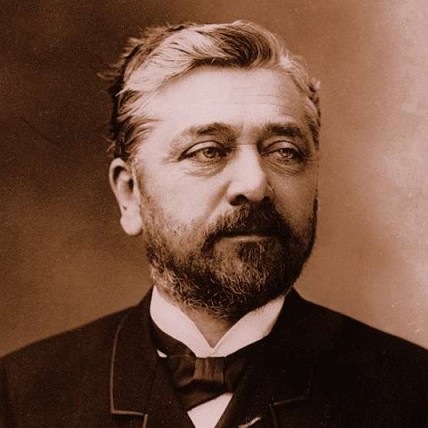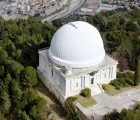Gustave Eiffel highlighted buildings, influences and style

Born in 1832 in Dijon (France) † 1923
Architectural style and influences of Gustave Eiffel
Alexandre Gustave Eiffel was a French civil engineer, born on December 15, 1832, in Dijon, France.
He is best known for designing and building the Eiffel Tower, which was constructed for the 1889 Paris Exposition.
Eiffel also designed and built several bridges for the French railway network, including the Garabit Viaduct.
In addition to his work in civil engineering, Eiffel made important contributions to the fields of meteorology and aerodynamics.
He passed away on December 27, 1923, in Paris, France.
Gustave Eiffel, the French civil engineer and architect, is most famous for the iconic Eiffel Tower in Paris, France. His style, particularly evident in the Eiffel Tower, is characterized by a combination of engineering innovation, utilitarian design, and artistic flair. Here are some key aspects of Gustave Eiffel's style and the materials he used:
Structural Innovation
Gustave Eiffel was a master of structural engineering, and his designs often pushed the boundaries of what was thought possible at the time. The Eiffel Tower, completed in 1889 for the Exposition Universelle (World's Fair), was a revolutionary structure. It was the tallest man-made structure in the world at the time and showcased Eiffel's expertise in iron construction.
Iron as the Primary Material
The Eiffel Tower is primarily made of iron, specifically wrought iron. This choice of material was significant because it was relatively new for large-scale constructions. Wrought iron was known for its strength, durability, and malleability, making it ideal for the intricate lattice-work design of the tower.
Lattice Structure
One of the most distinctive features of the Eiffel Tower is its lattice structure. Rather than using solid walls or columns, Eiffel opted for an open framework of interlocking iron beams. This lattice design reduced the weight of the tower while maintaining its structural integrity. It also allowed for transparency, letting light and air pass through the structure.
Modular Construction
To facilitate the construction of the tower, Eiffel used a system of prefabricated iron parts that were assembled on-site. This modular construction method allowed for efficient assembly and reduced costs. The parts were designed to fit together precisely, creating a seamless and elegant final structure.
Artistic Elements
While primarily an engineer, Eiffel also incorporated artistic elements into his designs. The Eiffel Tower is not just a feat of engineering but also a work of art. The lattice structure itself creates intricate patterns that change in appearance depending on the angle of viewing and the lighting conditions.
Ornamental Details
Though known for its industrial appearance, the Eiffel Tower includes ornamental details that add to its aesthetic appeal. These include decorative arches, scrollwork, and decorative flourishes at the top of the tower. These details provide a contrast to the industrial nature of the iron structure.
Minimalism and Functionality
Eiffel believed in the beauty of simplicity and functionality. His designs often reflect a minimalist aesthetic, where form follows function. The Eiffel Tower, with its open framework, is a prime example of this approach. Every element of the structure serves a purpose, from the legs that provide stability to the lattice beams that support the weight.
Legacy and Influence
Gustave Eiffel's use of iron in the Eiffel Tower revolutionized the field of architecture and engineering. His innovative design techniques and materials paved the way for the use of iron and steel in skyscrapers and other large-scale structures. The Eiffel Tower itself remains an enduring symbol of Paris and a testament to Eiffel's engineering genius.
Gustave Eiffel's architectural style is characterized by structural innovation, the use of wrought iron as the primary material, a lattice structure for the framework, modular construction methods, artistic elements, ornamental details, minimalism, and functionality. The Eiffel Tower stands as a testament to his engineering prowess and remains one of the most recognizable and celebrated landmarks in the world.
Notable contributions to the field of civil engineering and architecture
Eiffel Tower: Constructed for the 1889 Paris Exposition, the tower stands at a height of 324 meters and is one of the most recognizable landmarks in the world.
Garabit Viaduct: A railway arch bridge spanning the River Truyère in southern France, the bridge was completed in 1884 and was the highest bridge in the world at the time of its construction.
Statue of Liberty: Eiffel designed the internal structure of the statue, which was a gift from France to the United States in 1886.
Nice Observatory Dome: The observatory was built in 1886 and features a dome designed by Eiffel.
Maria Pia Bridge: A railway bridge in Porto, Portugal, the bridge was completed in 1877 and was the first major work of Eiffel’s career.
Highlighted buildings of Gustave Eiffel:
-
San Pablo Bridge (Cuenca)
-
Pont de les Peixateries Velles (Girona)
-
Eiffel Tower (Paris)
-
Nyugati Railway Station (Budapest)
-
Nice Observatory (Nice)
The Nice Observatory's dome, designed by Gustave Eiffel, is a remarkable example of both architectural and engineering prowess. Here are some details about this iconic structure:
Design and Construction
Gustave Eiffel, renowned for the Eiffel Tower in Paris, was also responsible for the design and construction of the dome of the Nice Observatory. Completed in 1886, the dome was part of the larger observatory complex designed by the architect Charles Garnier.
Innovative...

-
Maputo Railway Station (Maputo)






 Santiago Calatrava
Santiago Calatrava  Ban Shigeru
Ban Shigeru  Benedetta Tagliabue
Benedetta Tagliabue  César Pelli
César Pelli  Frank Gehry
Frank Gehry  Jean Nouvel
Jean Nouvel 